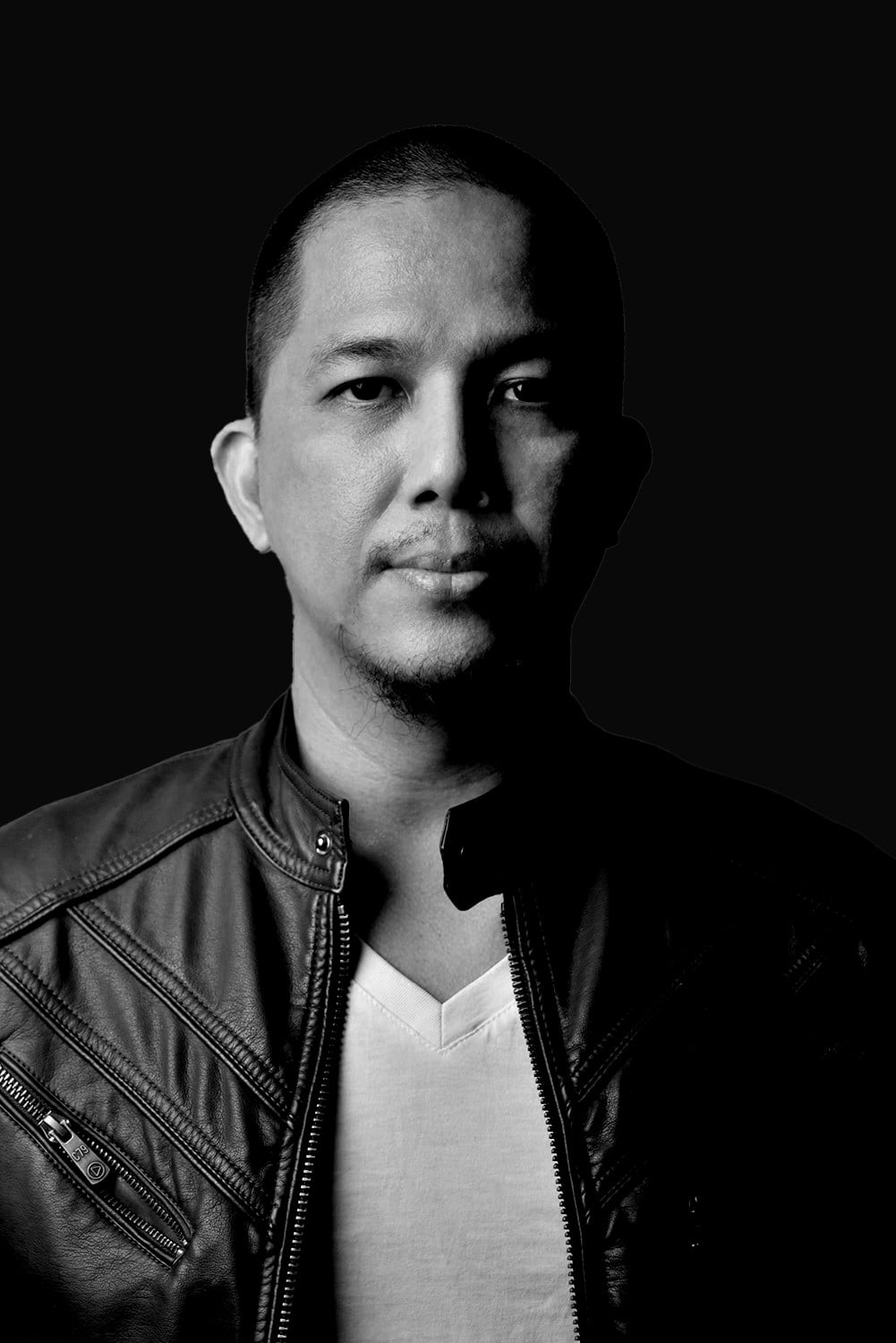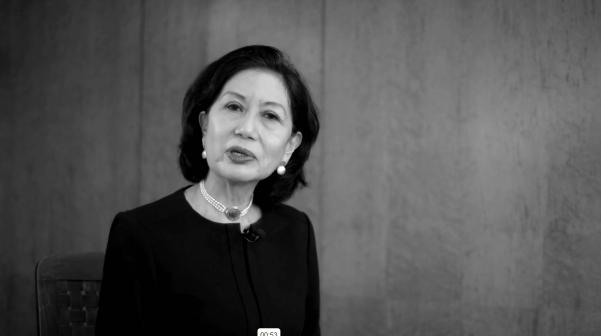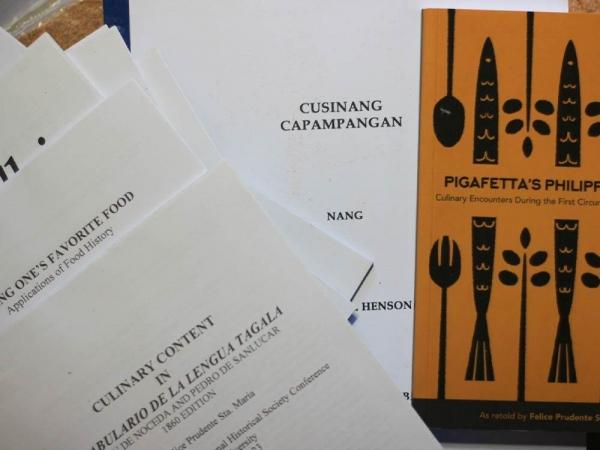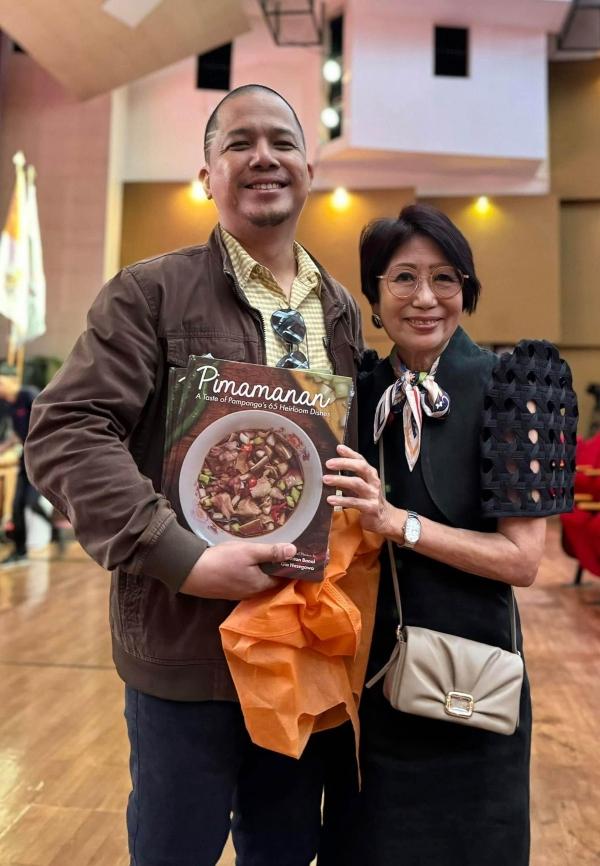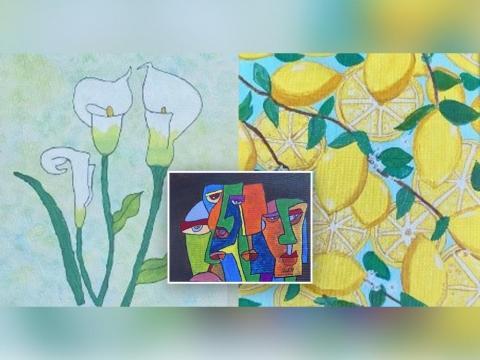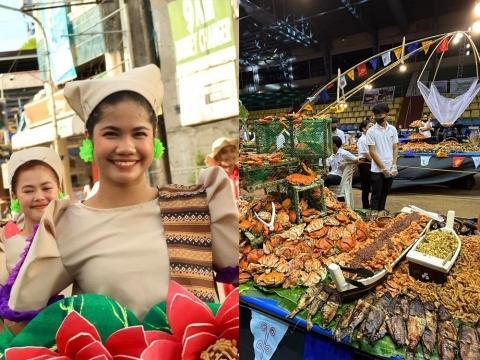Felice Sta. Maria: Bridging generations through culinary history
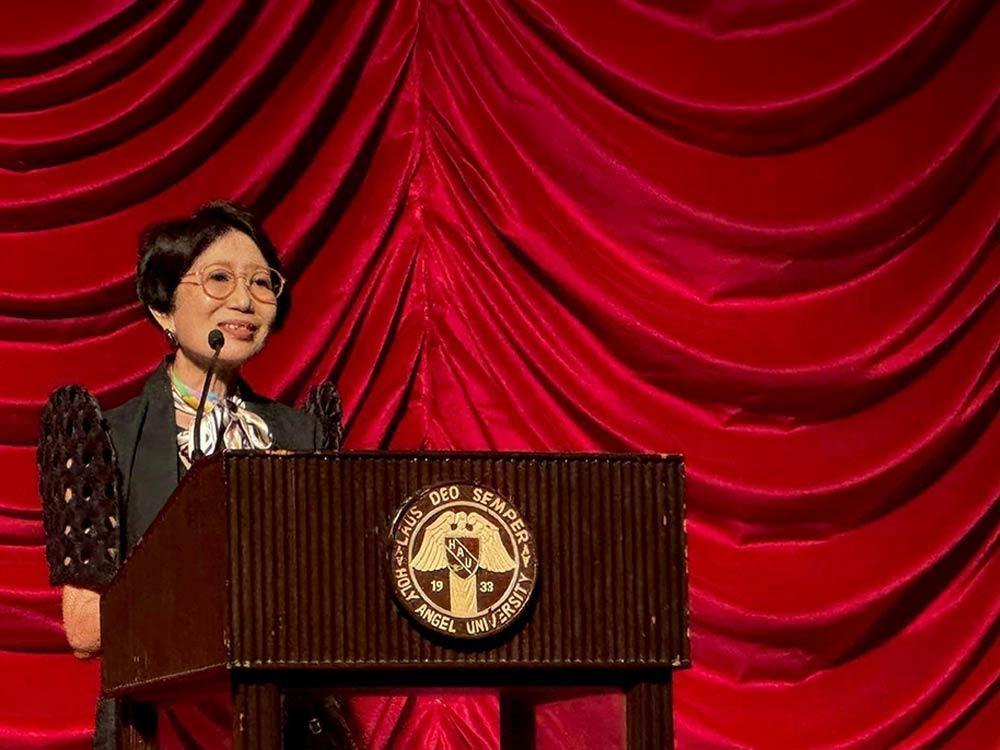
Though I had long been familiar with her name--having read her works as an art history student--this was the first time I had the chance to speak with her directly, in the company of the senior members of the Camera Club of the Philippines.
At the time, I was pushing for the group's recognition at the Lucie Awards in New York, and I wanted Felice to be one of the speakers--not just because she was a member, but because I believed it was important to have a woman's voice in a field traditionally dominated by men.
Years later, I would come to know Felice beyond that initial meeting. Beneath her soft-spoken demeanor was a sharp wit and an effortless grace--qualities that would make her an undeniable force in the world of culinary history.
Our discussion started through online conversations about my ongoing project under the Department of Tourism and Nanay Foundation. Together with Prof. Laya Boquiren of UP Cebu, I was working on a documentary and dossier for the Pamagduman tradition in Pampanga--an initiative aimed at securing a UNESCO inscription.
Through these exchanges, my perspective on culinary history deepened. Felice opened my mind to the complexities of treating such a topic--not just as a cultural tradition but as a system involving food history, mapping, value and supply chains, and sustainability. She guided me in approaching the subject with nuance, emphasizing the intricate relationship between culinary heritage and the communities that sustain it.
A clip of the video documentary about CCP for the Lucie Awards presentation in New York. (Photo by Ruston Banal)
I found myself listening intently to her insights--not just as a consultant, but as someone who, in many ways, took on the role of a mentor. Felice wasn't just an authority in her field; she was an educator who imparted wisdom with warmth and patience.
A quick search of Felice Sta. Maria's profile online reveals the depth of her contributions to cultural heritage and food history. Her career spans decades, marked by relentless efforts to document and elevate Philippine culinary traditions.
Felice is widely recognized as a pioneer in Philippine food history, focusing on the Spanish and American colonial eras. As the founder of the Philippine Food History website (www.felicepstamaria.net) and an internationally awarded non-fiction author, she has dedicated her life to making food more than just a matter of sustenance--it is a lens through which history, identity, and community are understood.
She champions the idea that "cultural action is civic action," using food as a means to advocate for sustainable food security, strengthen human connections, enrich personal philosophies, and inspire future generations. Her leadership extends beyond the written word--she has served as commissioner on the Philippine National Commission for Culture and the Arts, as a trustee of the Philippine National Museum, and as president of the Metropolitan Museum of Manila.
Titles and journals Felice Sta. Maria gave to Ruston Banal during the research and writing of Banal's book entitled Pimamanan
As a board adviser for the Ayala Museum and a vice president and co-founder of the Food Writers Association of the Philippines, Felice continues to shape the discourse on Filipino food culture, ensuring that its narratives remain relevant and impactful. Her work is a testament to how history is not just something to be preserved--it is something to be lived, understood, and shared. Through her, I came to see that food history is not just about recipes or nostalgia; it is about agency, identity, and the choices we make for the future.
While working on Pimamanan, a coffee-table book that maps the networks of heritage dishes in Central Luzon, I once again turned to Felice Sta. Maria--not just for guidance but for the theoretical foundation that would give the project depth and academic rigor.
Felice didn't just offer insights; she provided me with journals and research papers she had written over the years, each one a key to understanding the broader historical context of Philippine gastronomy. Among these, her book Pigafetta's Philippine Picnic: Culinary Encounters During the First Circumnavigation, 1519-1522 became a revelation. It opened my eyes to the significance of Spanish documents in reconstructing our early foodways, helping me grasp what the first European chroniclers observed when they encountered the diverse and sophisticated gastronomy of pre-colonial Philippines.
I began to see culinary history as more than just a collection of recipes or nostalgic memories--it is a living, evolving narrative shaped by historical encounters, colonial influences, and indigenous resilience. She taught me that food is a reflection of a society's economic structures, trade networks, and cultural exchanges, and that to document it properly, one must look beyond the plate.
Curious about her perspectives on food history today, I asked Felice about the role of AI in this evolving field.
She recalled her early years in the 1970s, searching for documentation on Philippine foodways, trying to make sense of how and why our food evolved over time. But it wasn't just about recipes or nostalgic recollections; she wanted to understand the forces--cultural, political, and economic--that influenced what and how Filipinos eat. That same line of questioning remains relevant today, especially for younger generations growing up in a world where fast food and globalization threaten traditional food knowledge.
For Felice, culinary history is not just about celebrating heritage but also about addressing real-world issues--hunger, malnutrition, and food security. She sees food as an intersection of personal, familial, and governmental choices, each one impacting whether a nation thrives or struggles with malnutrition. The question, she poses, is simple: Why suffer from diet-related diseases when food, when approached with knowledge and care, can be both a source of nourishment and healing?
She also emphasizes that while Filipino food is often written about in terms of nostalgia--family traditions, provincial specialties, and regional pride--there is still a lack of discourse on food that is both delicious and healthy. More importantly, she argues that culinary history must be tied to the realities of local agriculture and economy. The act of buying food isn't just a personal choice--it's an economic force that keeps money moving within communities, supporting farmers, vendors, and small-scale producers.
Felice Sta. Maria receiving the Pimamanan book from its author Ruston Banal at the Holy Angel University. (Photo courtesy of Felice Sta.Maria)
At a food conference at Holy Angel University in Angeles City, I approached Felice Sta. Maria to give her a copy of my book. She stood out in a modern Filipiniana dress--black, knee-length, with delicate butterfly sleeves of sheer embroidered fabric, accented by a colorful scarf.
But getting close wasn't easy. A crowd of students surrounded her, eagerly waiting for an autograph. As each one left, I asked what they studied. Hospitality and Tourism Management. Education. History. Even senior high school students were there. It was clear--Felice wasn't just speaking to scholars or culinary experts; she was inspiring a new generation.
I took a selfie and thanked my mentor, the Filipina culinary historian Felice Sta. Maria.
To know more about the works of Felice online, you can check this website: www.felicepstamaria.net.



